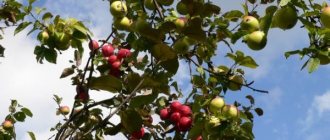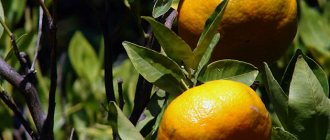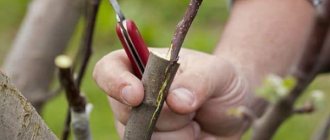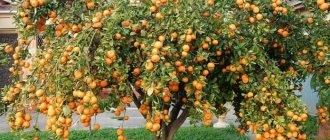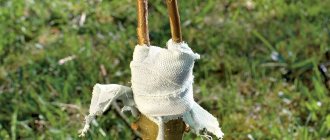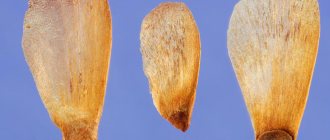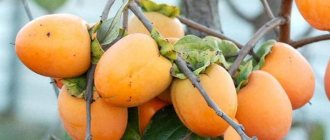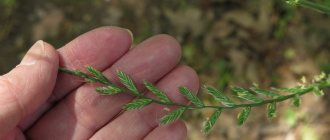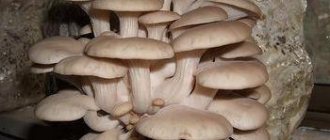Gardening » Citrus » Mandarin
0
969
Article rating
Kira Stoletova
Grafting tangerines at home makes it possible to propagate indoor citrus and get juicy fruits.
Rules for vaccinating tangerines at home
What tools are needed for vaccination?
Dear readers, based on the recommendations of professional agronomists, I prepared the tools for the job, that’s what I needed. Don’t forget: all tools and hands must be disinfected to prevent germs from getting into the cuts.
- Grafting secateurs.
- The blade is standard for a straight razor.
- A sharp kitchen or stationery knife.
- Wrapping material (adhesive tape, electrical tape, garden cellophane tape, sterile bandage).
- Garden var.
- Alcohol-containing solution.
Author's note
Natalia Papanova
Blog author
To ensure that tangerine grafting at home is successful, practice on a willow or other wild plant.
Watch the video to see what tools are needed for vaccination and why to carry out this procedure.
Don't like tangerine? Then check out how to grow pomegranates at home and start cultivating this fast-growing southern plant.
When should a tangerine be grafted?
Indoor tangerine is a good fruit-bearing plant. But you will have to wait a long time until the sprouts not only hatch from the seeds, but also get stronger and reach the optimal size for fruit set. After about 6–8 years, a tangerine tree without grafting will begin to bear fruit. Why wait if this process can be accelerated? To do this, you must definitely master the technique of grafting a plant. With a competent approach to this procedure, the tree will begin to bear fruit within 2–4 years after planting.
In order for the grafting of a tangerine tree to be effective, it is necessary to start it no earlier than April - May. During this period, the plant comes to life, and sap flow is activated. Interestingly, the bark is easily separated from the wood at this time, and this will make the process much easier for you. A tangerine grafted in the spring will grow stronger much faster.
Vaccination options
There are 3 grafting options that are suitable for a homemade tangerine bush: - behind the bark, into a split and budding. I will describe each in detail separately.
Author's note
Natalia Papanova
Blog author
I prepared the cuttings in advance; at the end of February, I cut several branches from a cultivated tangerine in the garden and put them on the balcony in a dry, dark place in a plastic bag, wrapped in a piece of cloth. If there is a fruit-bearing tangerine in the house, then there is no need to stock up on grafting material.
For the bark
The grafting using the “bark” method was carried out after the seedling’s winter rest, when the movement of sap along the trunk began - on the 20th of March. The time for this grafting recommended by experts is spring, the size of the rootstock trunk is at least 0.8 cm.
Instructions.
- The wildflower trunk was cut at a right angle at a distance of 20 cm from the base.
- If there are branches at the bottom of the trunk, I remove them.
- I made a longitudinal incision of the bark measuring 4-7 cm.
- Using a knife, I pushed back the edges of the bark so that the future scion could be inserted.
- The top of the cutting was removed at a right angle.
- The lower part was removed in one movement on an oblique.
- The cut must be perfectly smooth and even, otherwise the roughness will not allow the cutting to take root.
- She inserted the sharp edge of the cutting into the cut and, pressing it, secured it exactly in the direction of growth of the trunk.
- I wrapped the grafting site with tape.
- The sections were treated with garden varnish.
- I closed the structure in a transparent bag to create a greenhouse effect.
- I put it in a warm place, but out of direct sunlight.
- When the buds on the grafted cuttings hatch, I open them for hardening, gradually increasing the time to an hour.
Advantages:
Suitable for beginner gardeners.
Flaws:
The time for installing the rootstock to the scion is limited to 20 seconds, otherwise engraftment does not occur.
Have you tried grafting a tangerine onto the bark?
Not really
Into the cleft
For this grafting, I used a 2-year-old seedling with a trunk thickness of 1.2 cm and branches from the store from imported tangerines.
Step by step description.
- Using a knife, I shortened the trunk of the wildflower, leaving a stump 20 cm high.
- I removed the lower shoots from the trunk so that they would not take away the nutrition after grafting.
- I divided the trunk in half at the top, making a 5 cm long cut.
- For store-bought cuttings, I used scissors to cut the leaves down to half each so that the moisture would evaporate less.
- I made the lower tip on both sides in the shape of a spatula.
- I inserted it into the split trunk so that there was a cut edge of 1-3 mm.
- I pressed it and wrapped it with electrical tape for tight contact.
- I put a bag with hermetically sealed edges on top.
- Left it in a bright and warm place.
Pros:
An easy method.
Minuses:
The survival rate is average.
Watch the video of cleft grafting.
The cuttings took root after grafting into the cleft
Budding
The budding method is to graft one bud into the base of a wild bird. The method is more complicated than the previous ones, but gives 100% survival rate and is carried out before the start of sap flow.
For the procedure, you will need a cutting from a cultivated tangerine and a domestic wildflower planted as a seed. I will share with you the nuances of the operation.
Instructions:
- At the beginning of February, I made a cut along the length of the trunk with a knife, 6 cm long, on the trunk of a house plant.
- Along the edges of the cut at a right angle, I also cut the bark in the shape of the letter H.
- I chose a large bud from the cutting.
- I formed a chubucha longer than the cut on the trunk by 2 cm.
- Using a blade, I carefully separated a bud with a 0.3 cm thick bark.
- She pushed back the bark on the incision and tucked the kidney inside, pressing it tightly.
- She wrapped it around with tape and coated it with varnish on top.
- Accommodation should occur within a month or two.
- If the grafted kidney wakes up, the operation was successful.
Author's note
Natalia Papanova
Blog author
When I don’t have garden varnish on hand, I prepare it myself from equal parts of rosin, wax, lamb and beef fat.
Advantages:
Successful completion results in a 100% cultivated plant.
Flaws:
Need help from an experienced gardener.
Watch the video about budding.
Have you learned how to vaccinate? If you don’t yet have a tangerine bush at home, find out more about the indoor tangerine tree.
Young sprout grafted from a bud
Further care
Recommendations for caring for a tangerine tree immediately after grafting:
- for the first month, the plant is kept in a greenhouse from a bag or a cut plastic bottle to create optimal humidity, temperature and protection from drafts;
- to prevent rotting, the tree is ventilated every day, sun and air baths are given;
- the electrical tape is loosened after 2 weeks, and completely removed after a month;
- After bud germination, the tangerine trunk is shortened by cutting at an angle at a distance of 6–10 cm from the scion.
If successful, after 10–20 days the scion will be green or yellow and the joint will begin to grow together. If the scion does not take root, it turns black and rots.
Important! Such a tangerine is removed from the greenhouse, unbandaged, the scion is removed, and the cut area of the bark is treated with garden varnish.
In order for the tree to continue to grow and bear fruit, it must be properly cared for:
- Maintenance conditions: uniform lighting, sufficient amount of sunlight, air humidity from 50%, comfortable temperature: in the warm season - up to +20...+25°C, in the cold - within +5...+10°C.
- In summer, the plant is watered 2-3 times a week, in winter - 1 time, using settled or filtered water.
- Spray the bush with a spray bottle, in summer - every 2 days, in winter - once every 2 weeks.
- Special fertilizers for citrus fruits are applied 2-3 times a month during the spring-summer period.
- Tangerines up to 4 years old are replanted every year, adult plants - once every 2 years. They do this in the spring.
- Excess and damaged branches are pruned to improve fruiting and form a decorative crown. The trunk is periodically shortened.
- Winter is a period of rest. At this time, reduce the amount of watering and fertilizing. The temperature is maintained within +15°C.
To prevent diseases, once every 2 months the crop is watered with a weak solution of potassium permanganate.
This is interesting:
Health benefits and harms of tangerines, energy value and rules of consumption.
Ways to use tangerine peels for maximum benefit.
How to plant a homemade tangerine
When I completed the vaccinations, I still had one more bush left. I decided to wait for fruits on cultivated specimens. After 1.5 years, I collected the first harvest and began breeding the hybrid.
Preparing the tree
A rested and strengthened tangerine tree can be grafted at any time of the year, but it will be better to take root in early spring in rainy weather. It is not recommended to vaccinate an old plant (more than 10 years old); ideally, vaccinate in the first year after fruiting.
The tree must be prepared for grafting.
- A week before grafting, I water the seedling intensively.
- I check above the future grafting to see how the bark lags behind.
- If it separates well, you can start; if it separates well, I leave it for another 2-3 days.
- I clean the grafting site on the tree trunk from dust with a sponge.
- I disinfect with an alcohol solution in a 1:2 ratio with water.
- I remove the branches below the grafting and treat the cuts with varnish.
- After 7 days you can begin the procedure.
Have you prepared the tree for grafting? Take a look at how to grow a pumpkin on the balcony and a storehouse of vitamins will always be at hand.
Choosing a rootstock and scion
I thought for a long time about which rootstock to choose to create a hybrid. I reviewed all the possible options for tangerine, compiled a table, you can check it out.
| Scion | The result is a hybrid |
| Pomelo | Tangerine with orange juicy berries. |
| Orange | Clementine has a thinner orange skin and medium-sized berries. |
| Kumquat | Calamondin with thin skinned, sweet and sour and small fruits. |
| Lemon | Citrandine with elongated yellow-orange and rough fruits. |
Of the suitable citrus fruits, I chose lemon, because my neighbor has a wonderful large one with fruit growing in his window.
Process
I begged for a twig, I invite you to a lesson on grafting a lemon onto a tangerine. Keep in mind that both trees are cultivated - this will result in a new hybrid with the properties of both plants.
Instructions.
- I have already processed my bush; in the chosen place I make a cut in the bark in the shape of the letter T.
- The incision measures 3.5 cm.
- I move the edges of the cut away from the trunk.
- I remove a cutting with 3 leaves from part of the leaf.
- Using a sharp stationery knife, I evenly cut the edge of the cutting at an angle of 30 degrees.
- I place a lemon branch under the bark and press it down.
- I try not to touch the cut area with my hands to avoid infection.
- I wrap it in a sterile bandage and seal it with garden varnish.
- It stays this way until new sprouts form on the lemon branch.
- I take off the bandage so that the constriction does not come out.
Pros:
It turns out a new bush with a strong immune system.
Minuses:
The process is labor intensive. Requires 2 cultivated plants.
Now that you have completed the lesson, join us to see how to store tangerines - useful information will add to your knowledge.
Cuttings for grafting
Why does a tangerine tree need to be grafted?
Grafting a tangerine is a mandatory procedure if you want to grow a full-fledged tree with both a decorative crown and juicy fruits.
The procedure involves transferring a part of one plant to a second one so that they grow together. As a result, the powerful root system of the rootstock ensures the growing season of the scion, a variety with the desired characteristics.
Graft:
- Accelerates the onset of flowering and fruiting. A successfully grafted tangerine bears fruit abundantly 2-3 years after the procedure. In an ungrafted tree grown from a seed, fruits form in 7-10 years.
- Provides high-quality harvest in large quantities. The fruits of the scion, unlike the bitter fruits of the wild ones, are juicy and sweet in taste.
I will highlight the main thing
Let me summarize the article.
- I graft so that the tangerine begins to bear fruit earlier.
- The simplest vaccination is for the bark.
- 100% guarantee of engraftment during budding.
- After kidney implantation, the key point is proper care.
Dear readers, I have finished talking about the rules for obtaining cultivated tangerines and methods of care after the growth of the cuttings. I invite you to take a test on the topic of the article - you will find out how well you remember the material.
What you will need
How to plant tangerine at home? First, you need to carefully prepare for this process: acquire useful tools, for example. In order for the grafting to be successful and without unnecessary worries, you will need to use a budding knife, a scion (that is, a branch from an already developed and well-bearing plant) and a rootstock (a seedling that was obtained by growing a tangerine from seeds), a garden varnish, and insulating tape. Please note one more important point: it is not recommended to vaccinate if your house plant is not yet two years old.
Step-by-step instruction
It is absolutely necessary to graft tangerines, and experienced flower growers understand this very well. But the task ahead of you will be quite painstaking, so the result will be higher the deeper you delve into the key rules. First of all, mark the height of the seedling (6–7 cm from the ground). You will then need to thoroughly clean it to remove any contaminants. When the seedling is prepared, there is no dirt or dust on it, you can begin direct grafting.
First, make a small cut, which will be shaped like the letter T. Try not to touch the wood while doing this, so as not to damage the plant itself. Once the cut is made, lightly press the tip of the knife into the bark to create a small hole inside. Place the rootstock there. After that, cover it tightly, grease it generously with garden varnish and then wrap the entire top with insulating tape. When all stages of tangerine grafting have been completed, you can only wait for the results and continue to care for the houseplant.
Plant care after grafting
The scion on a tangerine tree will take hold, grow and bear fruit only if the plant is provided with appropriate care. High humidity, comfortable temperature conditions (in summer up to approximately 20–25 degrees above zero, in winter – 5-10 degrees Celsius is enough), a lot of sunlight – these are the basic rules for maintenance and care. Remember that the plant loves air and light, so give it air and sun baths more often, while avoiding direct contact with active ultraviolet rays.
In order for a beautiful and fruit-bearing tangerine tree to appear on your windowsill, do not forget about fertilizing and preventing diseases characteristic of citrus plants.
How to understand that the vaccination was successful
If you carry out the procedure correctly and then organize normal tree care, then almost all the grafting will take root. Determining this visually is quite simple:
- the cuttings will turn yellow (but will not dry out);
- A shoot will appear from the scion in a few days.
Grafted tangerine gives a good harvest
If over time the scion begins to turn black or dry out, it means it has not taken root. Then it must be carefully removed; you can make an incision to the healthy part of the shoot. The damaged area should be sprinkled with charcoal powder or lubricated with garden varnish to prevent fungal spores and other pests from entering through the wound.
Features and conditions of tangerine grafting
So, the tangerine has grown and become stronger, it is in a separate pot. Now you need to make sure that it bears fruit. First, you need to think about having a tree that bears fruit for grafting (you will need a cutting with two to four buds).
Important. You should not try to graft a plant that is less than two years old.
Some time before grafting, you should start watering the plant abundantly, then check how the bark is falling away from the tree by cutting the bark slightly above the place where the grafting will be done. In order to properly graft a tree, it is very important to follow a number of rules.
You must act accurately, quickly and confidently. If you work slowly, the plant's tissues may oxidize under the influence of oxygen, in which case the graft simply will not take root.
Without vaccination, a tangerine grown at home will not bear fruit.
You can practice on plants that grow less slowly and are therefore less valuable. Hands and all instruments should be completely clean; ideally, wear sterile surgical gloves. Otherwise, bacteria and fungi will simply destroy the young plant. You should try not to touch the cut with your hands, and wipe the grafting site and cuttings with a damp cloth, or (which is ideal) treat it with a fungicide.
Where do tangerines grow in open ground, what are the popular varieties?
In order for a tangerine to bloom and bear fruit at home, it needs optimal or close to optimal conditions:
- good lighting (a place near the south, south-east window) and protection from direct sunlight;
- temperature 20–25 °C in summer and autumn, 16–18 °C during flowering;
- the absence of any poisonous plants nearby (mandarin categorically cannot tolerate them);
- non-acidified substrate;
- regular watering and spraying;
- annual (or more often) crown trimming.
Without good lighting, tangerines will neither grow nor bear fruit.
If the tangerine does not bloom or set fruit, the process should be stimulated. However, this can only be done after the tangerine has passed its winter dormant period.
The first option is what to do:
- Wrap copper wire tightly around the base of the trunk so that it is pressed into the bark. A disrupted sap flow process for a tree means “thoughts” about imminent death and the need to “have offspring.”
To stimulate tangerine flowering, you will have to create an “extreme situation” for the plant.
- After 5–6 months, remove the wire and cover the “wound” with garden varnish.
The method will not have an effect if there are no branches of the 4th–5th order in the crown. Therefore, to force a tangerine to branch, you need to tie the ends of the branches with thin wire, bend them away from the trunk, pulling the top down, and fix them in this position.
The second, less popular option for stimulating fruiting is to make two ring cuts up to 1 mm deep on the trunk and each skeletal branch with a 1 cm interval between them. The resulting ring of bark is removed, turned inside out and placed in place, secured with adhesive tape, tape, or grafting tape.
The homeland of tangerine is Southeast Asia. Of all citrus fruits, it is considered the most frost-resistant, the critical minimum is –8 °C. Such low cold resistance for Russia, coupled with a long (8–10 months, from February-April to November-December) period of fruit ripening, greatly limits the possibility of cultivating tangerines in open ground.
In Russia, this crop has successfully taken root and is grown on an industrial scale only in the Krasnodar region (surroundings of Sochi, Adler). Attempts to move plantations to Crimea have not yet yielded positive results. The practice of amateur gardeners on the peninsula shows that the tree survives and bears fruit only if it is provided with high-quality shelter for the winter. In the territory of the former USSR, mandarins most like the Georgian and Abkhazian climate.
For gardeners in central Russia and regions with harsher climates, a tangerine tree on the plot is still a pipe dream
Russian gardeners and farmers choose varieties based on their cold resistance:
- Sochi No. 23 - early tangerines, large, sweet, somewhat similar in shape to pears;
- Pioneer 80 - fruits of medium ripening, flattened, sweet and sour;
- Unshiu broadleaf - an early variety, the fruits are large, sweet, flattened, with a pronounced “navel”;
- Kovano-Vase (Kovano Vasyo) is a dwarf tree up to 1.7 m high, fruits with thin skin, very sweet and juicy.
Mandarin Kowano Washo is a very compact tree
In those regions where the climate is suitable for tangerine, it is enough to choose a well-lit place for the seedling, protected from sharp drafts. In Crimea, the trench method of cultivation is practiced, which makes it possible to cover the plantings for the winter. The depth of the trench is 1.5–1.8 m, the width is about 1.5 m, the length depends on the number of trees being planted. They dig it on a slope oriented to the south, southeast.
How to use the trench method:
- The northern end is made vertical, for thermal insulation it is laid out with brick, stone, thick boards, and whitewashed. The southern one, on the contrary, should be sloping (45–50°).
- Drainage is poured onto the bottom with a layer at least 10 cm thick.
- Plant tangerines in a mixture of fertile turf soil and humus (1:1). The plant does not tolerate acidic soils.
- A removable gable “roof” is installed over the trench from wooden frames, on which durable polyethylene is stretched. An alternative is arcs and polycarbonate.
Growing tangerines using the trench method provides them with reliable protection from the cold.
Adviсe
You can grow a tangerine from a seed at home, and the plant will turn out to be quite fertile, thanks to the grafting you carried out. To do this, you need to follow the basic rules and provide full care for the grafted seedling after the procedure is completed.
For example, when a young shoot begins to grow from a grafted bud, it is recommended to cut the trunk obliquely. Be sure to lubricate the cut with garden varnish. If desired, the shoot can be tied up so that the crown is formed correctly in the future. Follow the basic recommendations for growing tangerines, and the grafting will be effective. The main advantage of this procedure lies in the fact that you will be able to collect ripe fruits much earlier than if you had done without grafting your indoor tangerine. Take care of your home tangerines and vaccinate them according to the rules.
